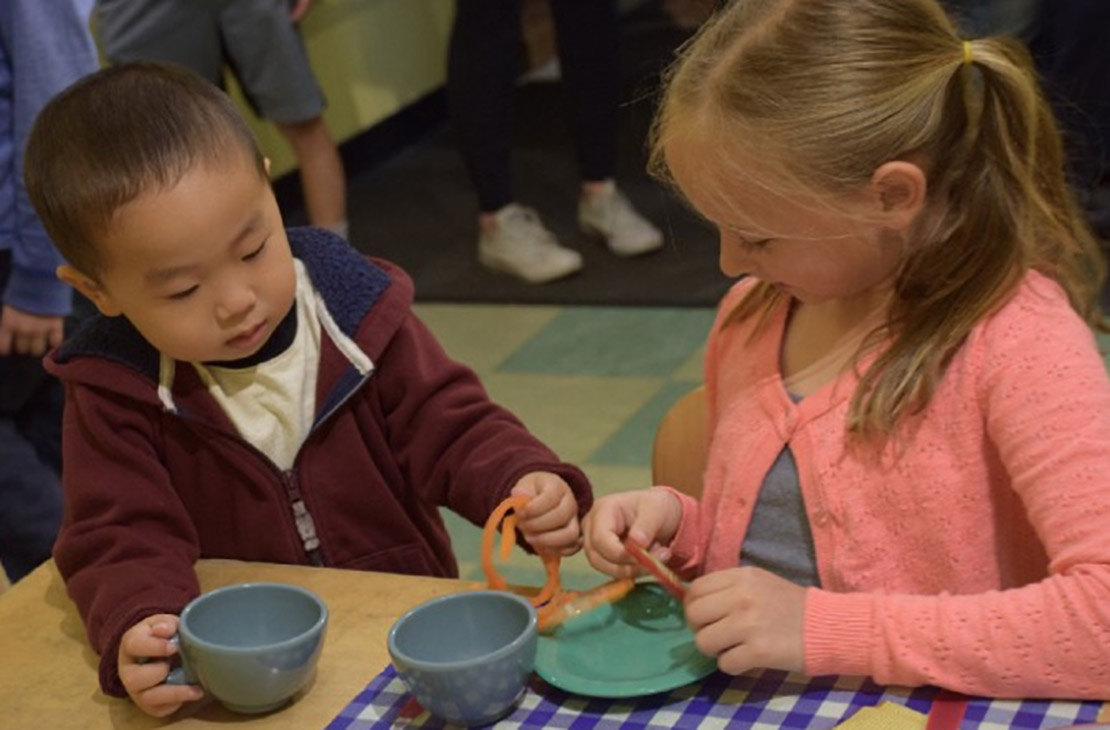by Cecilia Clark
It’s no secret that children spend a great deal of time playing. What may be less known is that play helps build your child’s brain. Turns out that play activates the whole neocortex or front part of the brain and builds new circuits in the prefrontal cortex. But it’s not just any play, it’s “free play” with no rules and no parental intervention, where kids have to make their own decisions, take turns, regulate emotions, and solve problems.
Why is this important?
The prefrontal cortex of the brain is where executive functions take place — think of it as command central. It’s where we balance emotions, make decisions, and decipher problems. The more developed this area is, the more socially savvy we become in navigating complex social scenes. A growing body of research supports what parents suspected all along — play isn’t just play. It is essential to brain development.
Here are five ways that play builds a better brain.
1. Play builds resilience. During play, children learn how to negotiate for themselves, resolve issues, and share with others. The ability to make mistakes and recover is critical to success in life. Now commonly referred to as grit, the skills to rebound from adversity and keep going ultimately build confidence and lessen fears.
2. Play actually changes neurons in the brain. Sergio Pellis, a researcher at the University of Lethbridge in Alberta, Canada told NPR, “The experience of play changes the connections of neurons at the front of your brain. Without play experiences, those neurons aren’t changed.”
These positive changes make the brain more socially agile. The late neuroscientist Jaak Panksepp of Washington State University studied play in rats. He found that of the 1,200 genes that were measured, approximately1/3 were significantly changed with only 30 minutes of play a day. While it doesn’t mean that play has the exact effect on human brains, there’s valid reason to believe it does. Pellis says that play is very similar across species and uses common rules.

3. Play stimulates curiosity and supports lifelong learning. Children are naturally curious –and play helps fuel the desire for youngsters to make their own discoveries about the world. During imaginative play, kids try on adult and make-believe roles to create and explore a world they seek to master. This self-discovery and exploration helps build a better brain and ideally sparks a love of learning for the sheer joy vs a specific end goal.
Children’s museums exist to unleash opportunities for free play in an environment where children joyfully explore, discover, and navigate the world on their own terms and with each other.
“As Maria Montessori said, ‘Play is the work of children,’“ said Jenni Martin, Director of Education and Strategic Initiatives. “At Children’s Discovery Museum of San Jose, we provide unique and inspiring opportunities for children to test out their important world of work: exploration, decision-making, evidence-weighing, and emotional navigation.”
4. Play helps children navigate complex social situations now and into adulthood. The new circuits the brain builds from play help create social agility. Social skills are one of the greatest predictors of academic success. According to recent research, elementary students with strong emotional and social skills are 54% more likely to earn a high school diploma, twice as likely to retain a college degree, and 46% more likely to have a full-time job at 25.

5. Play develops dexterity and physical strength. As kids play, they’re moving and actively working their bodies, developing muscle control and strength. This promotes healthy habits that lessen the likelihood of childhood obesity and helps instill passion for physical activity throughout life.

